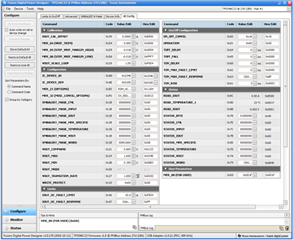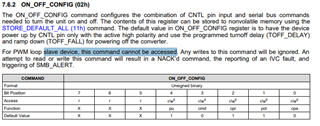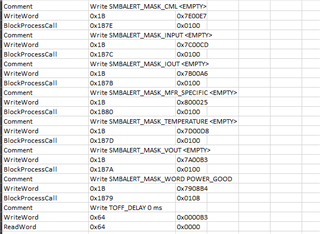Tool/software:
Hi,
I am having some questions on how to program this device.
Currently I am powering up the device by giving avin 5v. That's it. Then I give 3.3 pullups to data and clock pins. I see device responds to slave address 21h.
Currently I am trying to read the nvm registers, but I am not able to do so.
I am able to read only 0x10, 0x47, 0x50, 0x35, 0x36, 0x39, 0x46, 0x4F, 0XD0, 0XE5, 0XF0.
I am not able to read 0x02, 0x41, 0x45, 0x63, 0xD7, 0x21, 0x29, 0X60, 0X61, 0X64, 0X65, 0XD4. It does not give me acknowledgement when I send these register command.
Is this the expected behaviour? Or am I missing some steps?
Please lemme know if this is expected behaviour or not. Thanks!






